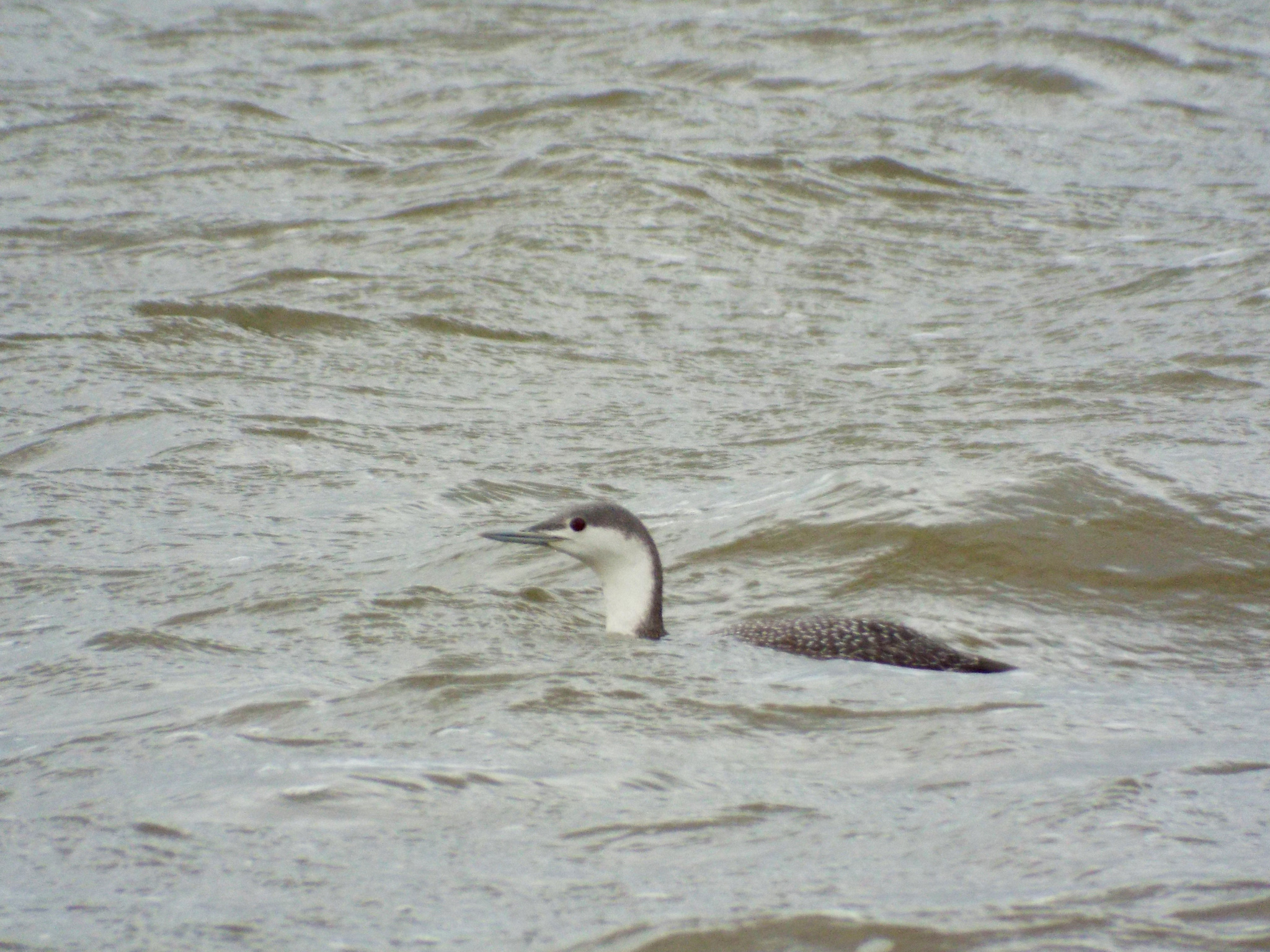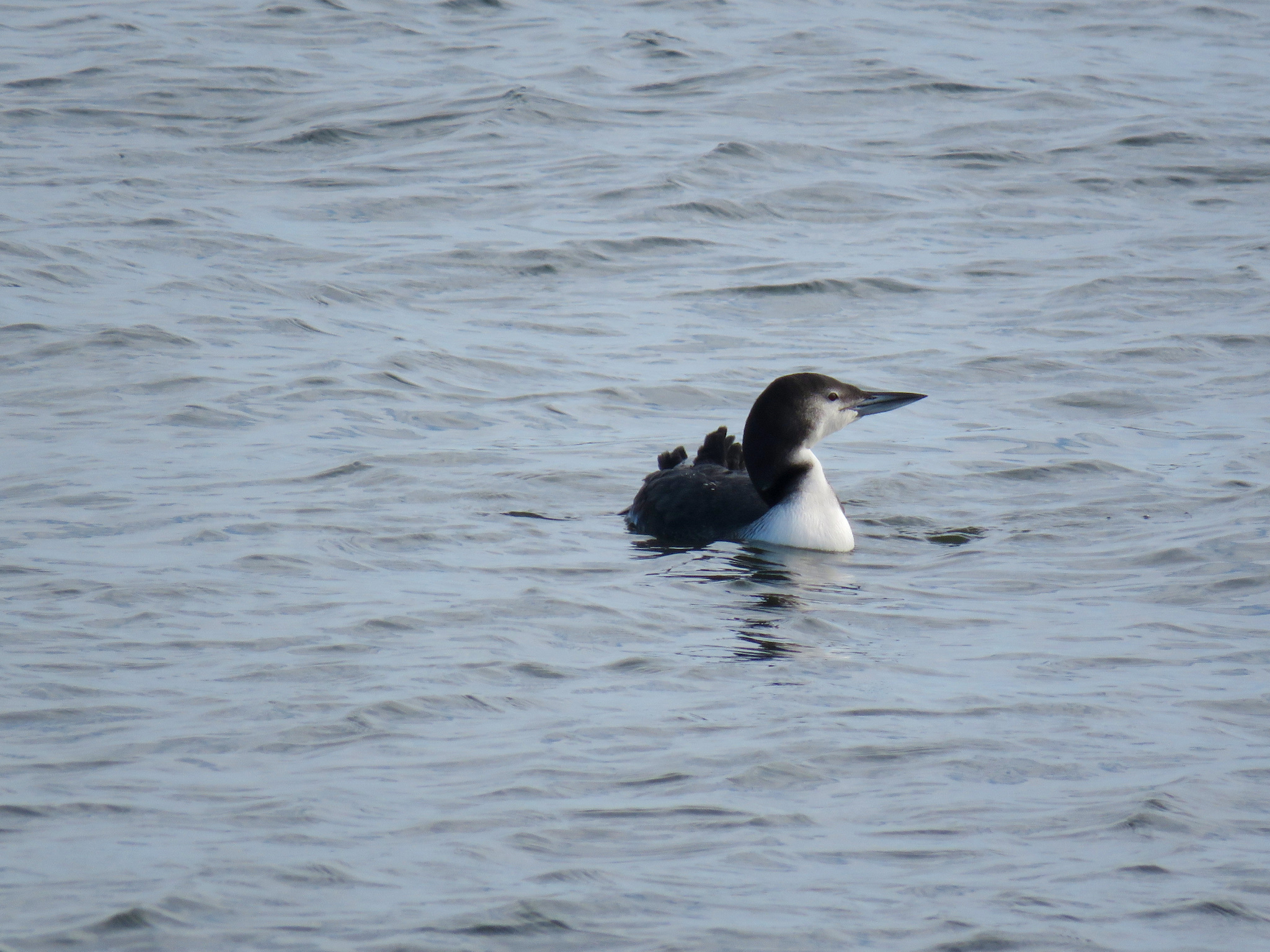






This week for Flora and Fauna Friday we’re looking and listening for a pair of wonderfully weird water birds, our Loons (Gavia spp.).
Here on the Sea Islands, two species of Loons frequent our tidal waters, the Red-throated Loon (Gavia stellata) and the Common Loon (Gavia immer). Both species breed in the arctic, with the Common Loon also breeding across Canada and Alaska. They return to South Carolina each year to ride out the winter. Both of our Loons have a fairly duck-like silhouette but with a body sitting lower in the water, a long neck, round head, and a sharp and dagger-shaped bill. Loons prefer deep, open waters and aren’t afraid of swift currents or choppy seas. Loons need deep water because they hunt by diving, sinking beneath the waves to dart like a torpedo after fish, shrimp, and other sea life, or frogs and crawfish in freshwater lakes. They also need wide open water so they can take flight. Loons are built for swimming and consequently have legs pushed so far back on their body that, practically speaking, they can’t walk on land anymore. They pretty much have to slide and flop around like a seal. (This is why you rarely see them on land.) It also means taking flight is a struggle, as they have to take a running start, like a Cormorant or Anhinga would, but with less range of motion at their disposal. So they need a longer runway than most water birds to get airborne.
Red-throated Loons are often scarce in the Lowcountry. They prefer to whittle their winters away in the choppy, windswept waters of our beaches. They’re most often spotted along river inlets, beaches, or just offshore, bobbing on and diving under the surf in search of their next meal. They have a slender build and are about three-quarters the size of the Common Loon. Their bill is shorter, thinner, and sharper than their common cousin. This narrow bill and svelte physique give them a more streamlined appearance overall. Their winter plumage is a neutral-gray across the back speckled with white, like stars in the night. This gray extends up the nape of the neck, over the top of the head, and to end at the bill. Their throat and sides of their neck are pure snow-white, their bill a silver-gray, and eyes ruby-red. Here in South Carolina, Red-throated Loons rarely display their breeding plumage, which colors their bill black, head phosphate-gray, and their lower throat a rust-red. They also rarely ever vocalize outside of their breeding grounds in the Arctic Circle.
Common Loons are by far the more common of our two Loons. They’re also the most generalist in their habitat usage. Common Loons are abundant in lakes, inlets, sounds, tidal rivers, and major tidal creeks, particularly those close to the ocean and near confluences. They are heavy-bodied with a robust bill. Their winter plumage is quite drab, a dark-gray back running up the back of the neck to the bill, contrasted by a white throat and cheeks and with the only flash of color being their red eyes. On occasion, we’re lucky enough on Edisto to see one fully in its breeding plumage before it departs in spring. Their drab winter garb is replaced by a hood of iridescent black-green, a collar of white bars, and a black-green back studded thoroughly in small squares of pearl-white. Their calls and songs are equally beautiful and utterly captivating. An unmistakable holler that is equal parts harrowing and hallowed. The tune of the Loon echoes off the water, inundating the landscape and resonating deep in the soul of all who hear it; a call of the wild. A ringing wail, half mourning cry and new morning’s sigh, a requiem for our wilds of past and an exaltation for those that still last.